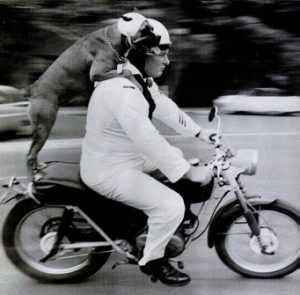Apr 9
Body of Evidence: Introduction
 Examine the linked clippings, a collection I assembled several years ago when teaching a research course centered on 1950s America. It contains every mention of the word "motorcycle" in the pages of Life from 1947-1962.
Examine the linked clippings, a collection I assembled several years ago when teaching a research course centered on 1950s America. It contains every mention of the word "motorcycle" in the pages of Life from 1947-1962.
Sources like these aren't rich enough to sustain analysis when examined one at a time. But amassing a bunch of minor sources allows you to make claims about cultural tendencies. By bundling ads or articles together as a "body of evidence," you create a composite source of significant complexity and richness. Because this is an exhaustive collection, you can use the relative abundance or absence of motorcycle references in a given year as a rough gauge of cultural interest in motorcycles.
What patterns do you see in this collection of articles? Decide on ONE thing that motorcycle signified to mainstream America in the 1950s. (Let your classmates cover other stuff.) Write a short piece calling attention to details from specific photographs as evidence for your claim. Post the results in the comments, below.
Bonus Listening
Last year I happened on a podcast that's a splendid instance of source-driven historical inquiry. Please read or listen to "Wipe Out," episode 397 of 99 Percent Invisible: website | podcast.
